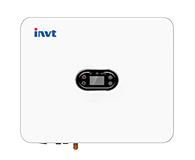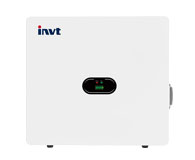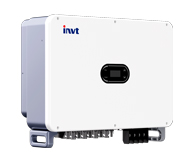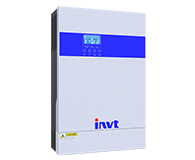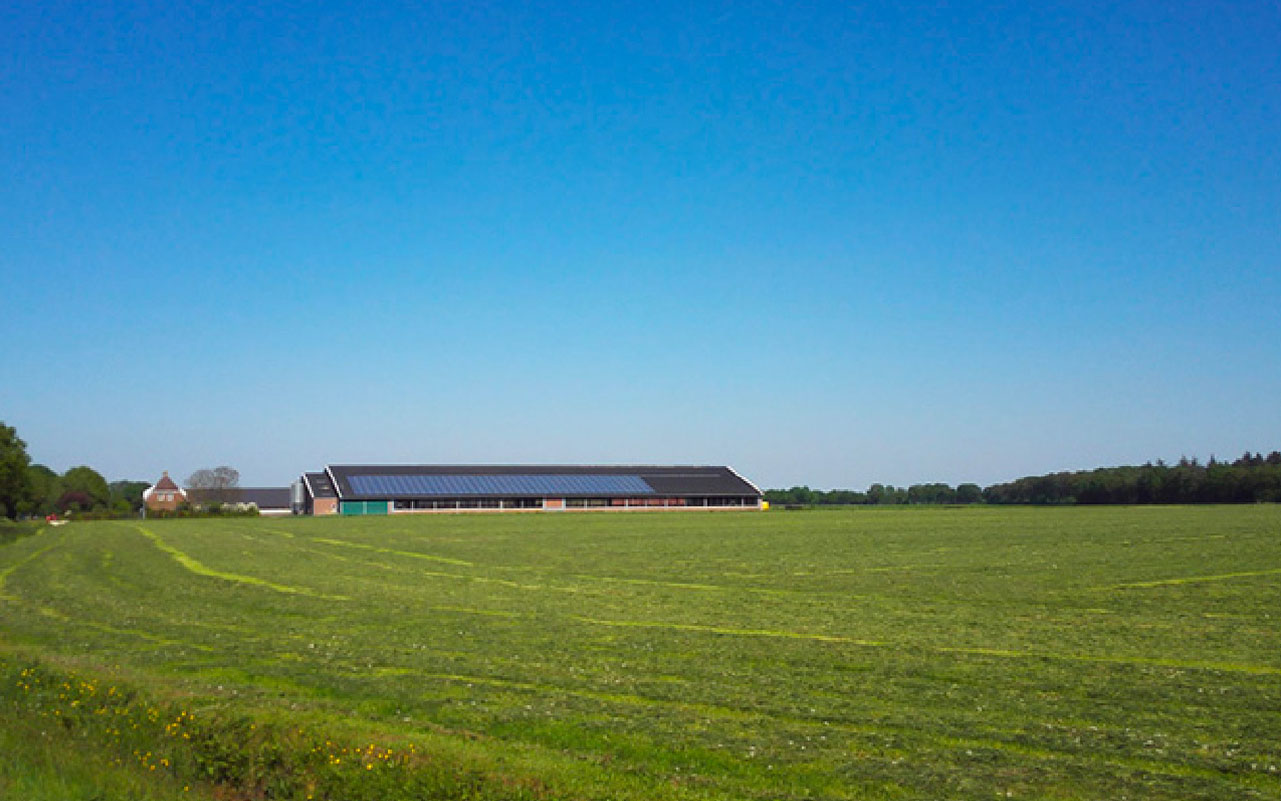FAQ
Q1: A001 Input UV:Input under voltage
Q3: A003 Grid UV:AC voltage under rated range
Q20: E014 DC inject:DC composition too high in AC Output
Q25: E023 PE loss:PE wire not connected
Analysis: DC Input PV1 voltage low. DC Input PV2 voltage low
Solution:
1. If it only happened in a bad weather (such as: in the evening or morning); but it’s normal at other times, so the failure probably be caused by the insufficient input power, this case is a normal phenomenon; Just wait for weather becoming better, the machine will automatically recover and generate power again, please ignore this situation.
2.Disconnect both of AC side and DC side switch, and unplug the Solar panel string from inverter one by one, to check if the positive and negative of each string is wrong or opposite, and test if each string voltage is within inverter rated range.If the DC connection is correct, please restart the inverter and observe whether the inverter can normally return to work.
3.Check if the inverter running mode be set correctly.
4.To exchange the 2 MPPT panel string and keep a further observation.
Q2: A002 Bus UV:Bus Under voltage
Solution:
1. If it only happened in a bad weather (such as: in the evening or morning); but it’s normal at other times, so the failure probably be caused by the insufficient input power, this case is a normal phenomenon; Just wait for weather becoming better, the machine will automatically recover and generate power again, please ignore this situation.
2.Disconnect both of AC side and DC side switch, and unplug the Solar panel string from inverter one by one, to check if the positive and negative of each string is wrong or opposite, and test if each string voltage is within inverter rated range.If the DC connection is correct, please restart the inverter and observe whether the inverter can normally return to work.
3.Check if the inverter running mode be set correctly.
4.To exchange the 2 MPPT panel string and keep a further observation.
Analysis:Inverter internal DC BUS voltage under range.
Solution:
1. Check if the panel DC voltage is In the rated range and be connected correctly
2. Turn off the inverter (Disconnect DC and AC), after 5 minutes then turn it on, observe it and check if inverter is able to return to normal. Check if the faulty will be repeated again.
Solution:
1. Check if the panel DC voltage is In the rated range and be connected correctly
2. Turn off the inverter (Disconnect DC and AC), after 5 minutes then turn it on, observe it and check if inverter is able to return to normal. Check if the faulty will be repeated again.
Analysis: Grid voltage too low
Solution:
1. Check what the phase voltage is and frequency is from the display, check if they are in the rated range.
2. Check if AC terminal and distribution box internal connection is correct, check if any connection is loose or disconnected, check if the breaker in distribution box was tripped.
3. Use the multimeter to check if the grid connection is correct, and check if phase voltage and line voltage is too low
4. Check if the inverter’s safety code be set correctly and Grid under-voltage protection point be set to match actual situation.
5. Waiting for a while until grid voltage recovered, to observe on inverter and check if it can automatically return to normal running.
Q4: A004 Grid UV:AC voltage over range
Solution:
1. Check what the phase voltage is and frequency is from the display, check if they are in the rated range.
2. Check if AC terminal and distribution box internal connection is correct, check if any connection is loose or disconnected, check if the breaker in distribution box was tripped.
3. Use the multimeter to check if the grid connection is correct, and check if phase voltage and line voltage is too low
4. Check if the inverter’s safety code be set correctly and Grid under-voltage protection point be set to match actual situation.
5. Waiting for a while until grid voltage recovered, to observe on inverter and check if it can automatically return to normal running.
Analysis: Grid voltage too high
lSolution:
1. Check what the phase voltage is and frequency is from the display, check if they are in the rated range.
2. Check if AC terminal and distribution box internal connection is correct, check if any connection is loose or disconnected, check if the breaker in distribution box was tripped.
3. Use the multimeter to check if the grid connection is correct, and check if phase voltage and line voltage is too low
4. Check if the inverter’s safety code be set correctly and Grid under-voltage protection point be set to match actual situation.
5. Waiting for a while until grid voltage recovered, to observe on inverter and check if it can automatically return to normal running.
Q5: A005 Grid UF:AC frequency under range
lSolution:
1. Check what the phase voltage is and frequency is from the display, check if they are in the rated range.
2. Check if AC terminal and distribution box internal connection is correct, check if any connection is loose or disconnected, check if the breaker in distribution box was tripped.
3. Use the multimeter to check if the grid connection is correct, and check if phase voltage and line voltage is too low
4. Check if the inverter’s safety code be set correctly and Grid under-voltage protection point be set to match actual situation.
5. Waiting for a while until grid voltage recovered, to observe on inverter and check if it can automatically return to normal running.
Analysis: Grid frequency too low
Soluition:
1. Check what the displayed AC frequency value is, check if the value is in the rated range.
2. Check if AC terminal and distribution box internal connection is correct, check if any connection is loose or disconnected, check if the breaker in distribution box was tripped.
3. Use a multimeter to see if the grid wire connection is correct ; check if the grid frequency is too low
4. Check if the inverter’s safety code be set correctly and Grid under-frequency point be set to match actual situation.
5. Please Wait for a while until the grid frequency recovered, then check if the inverter can return to normal
Q6: A006 Grid OF:AC frequency over range
Soluition:
1. Check what the displayed AC frequency value is, check if the value is in the rated range.
2. Check if AC terminal and distribution box internal connection is correct, check if any connection is loose or disconnected, check if the breaker in distribution box was tripped.
3. Use a multimeter to see if the grid wire connection is correct ; check if the grid frequency is too low
4. Check if the inverter’s safety code be set correctly and Grid under-frequency point be set to match actual situation.
5. Please Wait for a while until the grid frequency recovered, then check if the inverter can return to normal
Analysis: Grid frequency too high
Solution:
1. Check what the displayed AC frequency value is, check if the value is in the rated range.
2. Use a multimeter to check if the grid connection is correct ; and check if the grid frequency is too high
3. Check if the inverter’s safety code be set correctly and Grid over-frequency protection point be set to match actual situation.
4. Please Wait for a while until the grid frequency recovered, then check if the inverter can return to normal
Q7: A007 Clock Fail:clock incorrect
Solution:
1. Check what the displayed AC frequency value is, check if the value is in the rated range.
2. Use a multimeter to check if the grid connection is correct ; and check if the grid frequency is too high
3. Check if the inverter’s safety code be set correctly and Grid over-frequency protection point be set to match actual situation.
4. Please Wait for a while until the grid frequency recovered, then check if the inverter can return to normal
Analysis: The Inverter’s clock time be set to wrong or not set
Solution:
1. Check if the inverter’s clock be set correctly
2. Re-set the inverter’s clock through HMI or monitoring, check if the alarm is repeated.
Q8: A030 Lost Box:Box lost connection
Solution:
1. Check if the inverter’s clock be set correctly
2. Re-set the inverter’s clock through HMI or monitoring, check if the alarm is repeated.
Analysis: The communication is faulty between combiner box and inverter
Solution: Check if the RS485 cable connection between DC combiner box and inverter is correct, whether It is loose or disconnected.
Q9: E001 Input OV:Input voltage too high
Solution: Check if the RS485 cable connection between DC combiner box and inverter is correct, whether It is loose or disconnected.
Analysis: DC input voltage is too high
Solution:
1. Turn off the DC & AC Switch, and disconnect the DC solar string one by one, then, use the multimeter to check if the polarity direction and voltage of each string is correct, make sure it is in the rated range.
2. Restart inverter( by disconnect DC&AC switch, wait for 5 mins, then turn it on), observe if it can return to normal running.
Q10: E003 Bus OV:BUS over voltage
Solution:
1. Turn off the DC & AC Switch, and disconnect the DC solar string one by one, then, use the multimeter to check if the polarity direction and voltage of each string is correct, make sure it is in the rated range.
2. Restart inverter( by disconnect DC&AC switch, wait for 5 mins, then turn it on), observe if it can return to normal running.
Analysis: Inverter internal BUS voltage over range
Solution:
1. Check if the inverter’s DC side connection is correct, check if the DC voltage is in rated range
2. Restart inverter(disconnect DC&AC switch, wait for 5 mins, then turn it on), observe if it can return to normal running.
3. Check if the AC “N” and “PE” cable be connected well , and complied with the standard requirements
Q11: E004 Boost Fail:Boost faulty
Solution:
1. Check if the inverter’s DC side connection is correct, check if the DC voltage is in rated range
2. Restart inverter(disconnect DC&AC switch, wait for 5 mins, then turn it on), observe if it can return to normal running.
3. Check if the AC “N” and “PE” cable be connected well , and complied with the standard requirements
Analysis: Inverter has faulty on Boost circuit
Solution:
1. If it only happened in a bad weather(such as: in the evening or morning); but other times are normal, so the problem probably be caused by the insufficient input power, it’s a normal phenomenon; please wait for weather becoming better, the machine will automatically recover and generate power again, please ignore this situation.
2. Check if the inverter’s DC side connection is correct, check if the DC voltage is in rated range
3. Restart inverter (disconnect DC&AC switch, wait for 5 mins, then turn it on), observe if it can return to normal running.
Q12: E005 Grid OC:AC over current
Solution:
1. If it only happened in a bad weather(such as: in the evening or morning); but other times are normal, so the problem probably be caused by the insufficient input power, it’s a normal phenomenon; please wait for weather becoming better, the machine will automatically recover and generate power again, please ignore this situation.
2. Check if the inverter’s DC side connection is correct, check if the DC voltage is in rated range
3. Restart inverter (disconnect DC&AC switch, wait for 5 mins, then turn it on), observe if it can return to normal running.
Analysis: Inverter internal AC current output over range
Solution:
1. Check if the solar panel be configured too many. Check if total installed solar panel capacity is too high.
2. Check if there is a short-circuit in AC wire connection or in inverter AC terminal.
3. Restart inverter (disconnect DC&AC switch, wait for 5 mins, then turn it on), observe if it can return to normal running.
4. Observe if the grid Voltage is fluctuating too much.
Q13: E006 OTP:Over heat
Solution:
1. Check if the solar panel be configured too many. Check if total installed solar panel capacity is too high.
2. Check if there is a short-circuit in AC wire connection or in inverter AC terminal.
3. Restart inverter (disconnect DC&AC switch, wait for 5 mins, then turn it on), observe if it can return to normal running.
4. Observe if the grid Voltage is fluctuating too much.
Analysis: Inverter internal temperature is too high.
Solution:
1. Check if the inverter Fan is working and running normally
2. Check if the inverter Fan is stuck by something
3. Check if the inverter be installed well and complying with standards requirement, and inspect whether the ventilation conditions is well or not
4. Check if the inverter is installed directly towards the sunshine, or has any heat producing appliances nearby.
Q14: E007 Riso Low:Isolation value is too low
Solution:
1. Check if the inverter Fan is working and running normally
2. Check if the inverter Fan is stuck by something
3. Check if the inverter be installed well and complying with standards requirement, and inspect whether the ventilation conditions is well or not
4. Check if the inverter is installed directly towards the sunshine, or has any heat producing appliances nearby.
Analysis:external system insulation Resistance is too low
Solution:
1. Check the wiring situation of DC side and solar panel, such as the existence of poor contact, cable damage and other phenomena; (can judge it by measuring the positive and negative voltage to the ground);
2. Check if inverter/ wire/ solar panel be located in a wet environment.
3. When In a dry environment, to restart inverter(disconnect DC&AC switch, wait for 5 mins, then turn it on), observe if it can return to normal running.
Q15: E009 Int Comm:Internal communication fault
Solution:
1. Check the wiring situation of DC side and solar panel, such as the existence of poor contact, cable damage and other phenomena; (can judge it by measuring the positive and negative voltage to the ground);
2. Check if inverter/ wire/ solar panel be located in a wet environment.
3. When In a dry environment, to restart inverter(disconnect DC&AC switch, wait for 5 mins, then turn it on), observe if it can return to normal running.
Analysis: The Communication is faulty between main DSP and slave
Solution:
1. Restart inverter (by disconnect DC&AC switch, wait for 5 mins, then turn it on), observe if it can return to normal running
2. Replace the control board
Q16: E010 ILeek Fail:Current leakage too high
Solution:
1. Restart inverter (by disconnect DC&AC switch, wait for 5 mins, then turn it on), observe if it can return to normal running
2. Replace the control board
Analysis: the current leakage of system or inverter is too high
Solution:
1. Check if the wiring or connection of DC&AC side existed poor contact or wire damage phenomenon
2. Check if the ground wire connection are connected well among solar panels
3. Check if the inverter, wiring or solar panel is located in the very wet condition.
4. When In a dry environment, to restart inverter ( disconnect DC&AC switch, wait for 5 mins, then turn it on), observe if it can return to normal running.
Q17: E011 Relay Fault:Relay faulty
Solution:
1. Check if the wiring or connection of DC&AC side existed poor contact or wire damage phenomenon
2. Check if the ground wire connection are connected well among solar panels
3. Check if the inverter, wiring or solar panel is located in the very wet condition.
4. When In a dry environment, to restart inverter ( disconnect DC&AC switch, wait for 5 mins, then turn it on), observe if it can return to normal running.
Analysis: Inverter internal relay is faulty
Solution:
1. Make sure that the AC&DC connection is correct, especially pay attention to the “N” and “PE” cable , to check if their connection has been done well.
2. Restart inverter (disconnect DC&AC switch, wait for 5 mins, then turn it on), observe if it can return to normal running
Q18: E012 Fan Fail:Fan faulty
Solution:
1. Make sure that the AC&DC connection is correct, especially pay attention to the “N” and “PE” cable , to check if their connection has been done well.
2. Restart inverter (disconnect DC&AC switch, wait for 5 mins, then turn it on), observe if it can return to normal running
Analysis: Inverter internal FAN is faulty
Solution:
1. Inspect if the FAN cover plate is deformed
2. Observe if the FAN can normally running( judge it by hearing the running sound or use a hand to feel the wind status)
3. Disconnect the both of AC and DC side switch, after 5 minutes, to check if the FAN connection wire is loose
4. Replace the faulty fan, and observe if inverter can return to normal
Q19: E013 Eeprom:Storage is abnormal
Solution:
1. Inspect if the FAN cover plate is deformed
2. Observe if the FAN can normally running( judge it by hearing the running sound or use a hand to feel the wind status)
3. Disconnect the both of AC and DC side switch, after 5 minutes, to check if the FAN connection wire is loose
4. Replace the faulty fan, and observe if inverter can return to normal
Analysis: Inverter internal storage EPPOM is faulty
Solution: Restart inverter (Disconnect DC&AC switch, wait for 5 mins, then turn it on), observe if it can return to normal running
Solution: Restart inverter (Disconnect DC&AC switch, wait for 5 mins, then turn it on), observe if it can return to normal running
Analysis: DC composition is too high in AC Output
Solution: Restart inverter (Disconnect DC&AC switch, wait for 5 minutes, then turn it on), observe if it can return to normal running
Q21: E015 OutputShort:Ouput short circuit
Solution: Restart inverter (Disconnect DC&AC switch, wait for 5 minutes, then turn it on), observe if it can return to normal running
Analysis: Output AC short circuit
Solution:
1. Check if the AC cable/wires, or grid components is grounded, or short circuit.
2. Restart inverter (Disconnect DC&AC switch, wait for 5 minutes, then turn it on), observe if it can return to normal running
Q22: E018 Input OC:Input over current
Solution:
1. Check if the AC cable/wires, or grid components is grounded, or short circuit.
2. Restart inverter (Disconnect DC&AC switch, wait for 5 minutes, then turn it on), observe if it can return to normal running
Analysis:DC input over current
Solution:
1. Check if the solar panel be configured too many, or installed power capacity is too much.
2. Restart inverter (Disconnect DC&AC switch, wait for 5 minutes, then turn it on), observe if it can return to normal running
Q23: E019 Incnst:Date consistency is faulty
Solution:
1. Check if the solar panel be configured too many, or installed power capacity is too much.
2. Restart inverter (Disconnect DC&AC switch, wait for 5 minutes, then turn it on), observe if it can return to normal running
Analysis: The detected grid voltage/frequency/leakage current, or DC composition is inconsistent between main and slave DSP.
Solution: Restart inverter (Disconnect DC&AC switch, wait for 5 minutes, then turn it on), observe if it can return to normal running.
Q24: E020 PowerReversed:DC power is reversed
Solution: Restart inverter (Disconnect DC&AC switch, wait for 5 minutes, then turn it on), observe if it can return to normal running.
Solution: Restart inverter (Disconnect DC&AC switch, wait for 5 minutes, then turn it on), observe if it can return to normal running
Analysis: The PE wire is unconnected (this error code only available under AS4777 safety).The trigging value can be set through HMI.
Solution:
1. Check if the “ground” wire be connected well and complied with standard requirement
2. Check if the protection threshold value be set appropriately through LCD
3. Modify the protection threshold value or shutdown off this function
Solution:
1. Check if the “ground” wire be connected well and complied with standard requirement
2. Check if the protection threshold value be set appropriately through LCD
3. Modify the protection threshold value or shutdown off this function
Q2: E021 Meter CommErr:Power meter communication is faulty
Analysis: The communication between smart meter and inverter is faulty (When anti-feedback function is enabled)
Solution:
1. check if the RS485 cable is connected well
2. Check if the meter power supply is normal
3. Check if positive and negative of RS485 Cable is reversely connected.
Q1: A011 Grid Loss:Disconnected with grid
Solution:
1. check if the RS485 cable is connected well
2. Check if the meter power supply is normal
3. Check if positive and negative of RS485 Cable is reversely connected.
Analysis: Inverter lost the connection with grid
Solution:
1. Check if AC terminal and distribution box internal connection is correct, check if any connector is loose or disconnected. Check if the breaker was tripped in distribution box.
2. Use a multimeter to check if the connection with grid is correct ; and check if grid voltage and frequency is in the rated range
3. Check if the inverter’s safety code be set correctly and Grid protection value be set to match actual situation.
4. Please Wait for a while until the grid recovered, then check if the inverter can return to work
Solution:
1. Check if AC terminal and distribution box internal connection is correct, check if any connector is loose or disconnected. Check if the breaker was tripped in distribution box.
2. Use a multimeter to check if the connection with grid is correct ; and check if grid voltage and frequency is in the rated range
3. Check if the inverter’s safety code be set correctly and Grid protection value be set to match actual situation.
4. Please Wait for a while until the grid recovered, then check if the inverter can return to work
Q3: E008 IGBT drv IGBT:IGBT driving protection
Analysis: Inverter IGBT drive protection
Solution: Restart inverter (by disconnect DC&AC switch, wait for 5 mins, then turn it on), observe if it can return to normal running.
Q2: A032 Box SPD2:Lighting Protector2
Solution: Restart inverter (by disconnect DC&AC switch, wait for 5 mins, then turn it on), observe if it can return to normal running.
Analysis: Lighting Protector2 faulty
Solution:
1. Check if the lighting protector of DC combiner box can works or be damaged.
2. Check if the feedback signal cable of light protector in DC combiner box is loost or disconnected
Q1: A031 Box SPD1:Lighting Protector1
Solution:
1. Check if the lighting protector of DC combiner box can works or be damaged.
2. Check if the feedback signal cable of light protector in DC combiner box is loost or disconnected
Analysis: Lighting Protector1 faulty
Solution:
1. Check if the lighting protector of DC combiner box can works or be damaged.
2. Check if the feedback signal wire of light protector in DC combiner box is loost or disconnected
Solution:
1. Check if the lighting protector of DC combiner box can works or be damaged.
2. Check if the feedback signal wire of light protector in DC combiner box is loost or disconnected
Q1: A009 Cmd Shut:Shutdown manually
Inverter be shut down manually through HMI or monitoring operation
Method:
1. Check if the inverter is in manual shutdown status through HMI or background software. If in that case , Turn on the inverter through HMI, see if the inverter can return to works normally.
2. Turn off the inverter(Disconnect DC and AC), after 5 minutes then turn it on, check if inverter is able to return to normal running, and Check if the faulty will be repeated again.
Method:
1. Check if the inverter is in manual shutdown status through HMI or background software. If in that case , Turn on the inverter through HMI, see if the inverter can return to works normally.
2. Turn off the inverter(Disconnect DC and AC), after 5 minutes then turn it on, check if inverter is able to return to normal running, and Check if the faulty will be repeated again.

